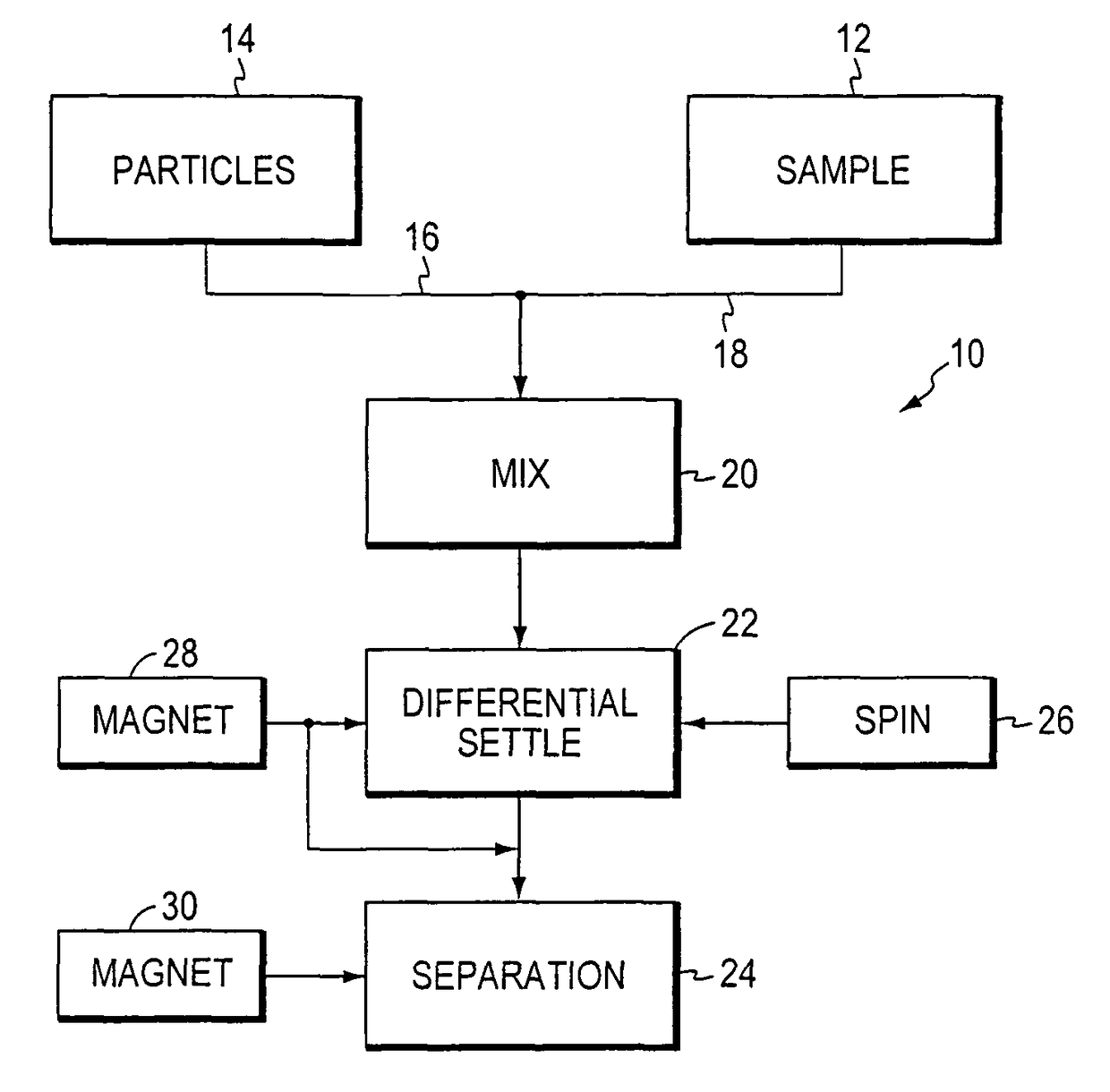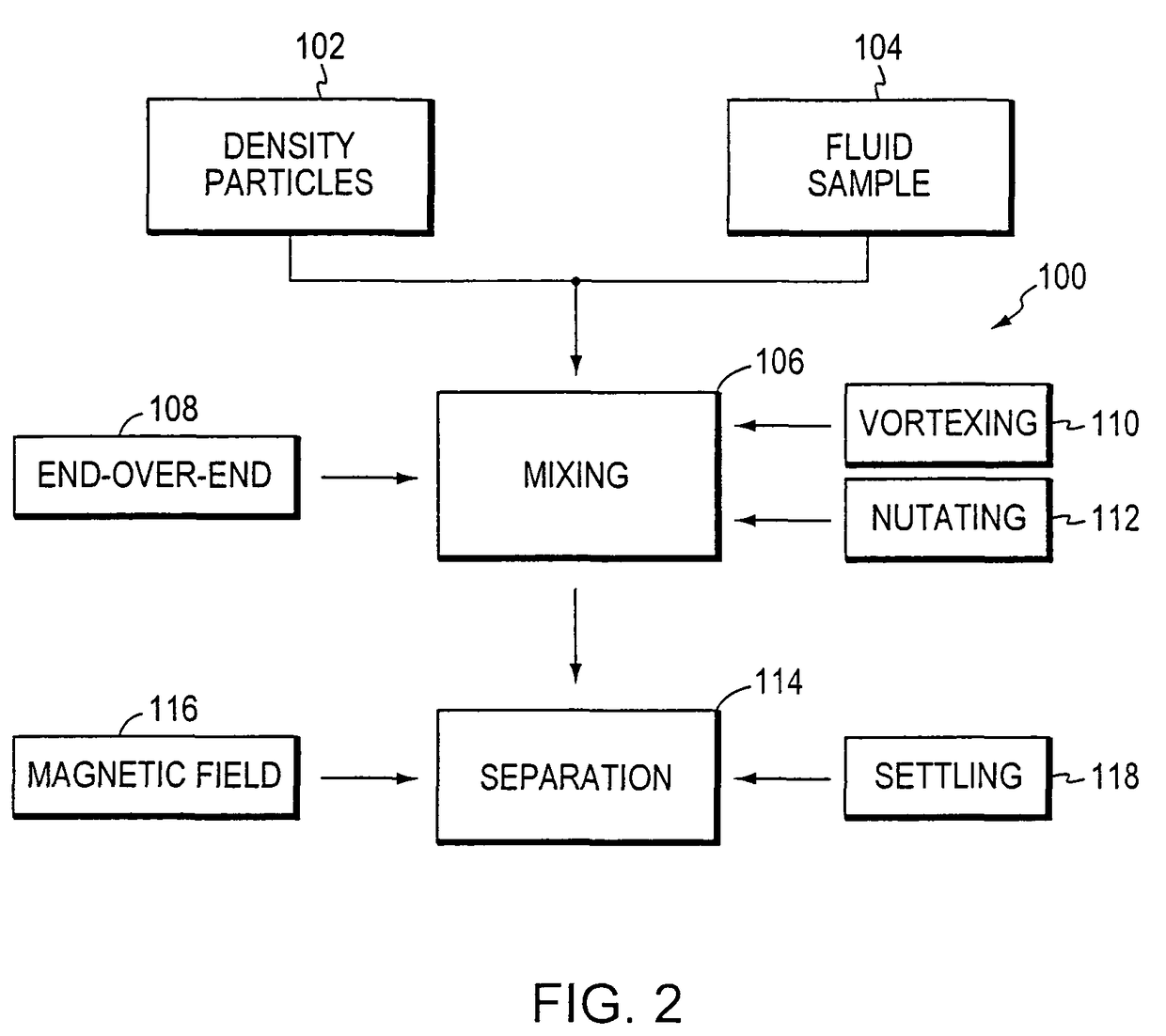Methods and reagents for improved selection of biological molecules
a biological and molecule technology, applied in the field of methods and reagents for improving the selection of biological molecules, can solve the problems of general non-specific nature of the mentioned ferromagnetic materials, inability to isolate specific biological molecules, and inability to bind specific biological molecules,
- Summary
- Abstract
- Description
- Claims
- Application Information
AI Technical Summary
Benefits of technology
Problems solved by technology
Method used
Image
Examples
example 1
[0101]Synthesis of ferromagnetic dense particles containing nickel:[0102]1. Weigh out 4.0 gm sodium hydroxide and dissolve completely in 100 ml beaker by stirring while beaker is covered with parafilm.[0103]2. Weigh out 2.04 gm nickel chloride and dissolve in 100 ml distilled water in a 200 ml beaker.[0104]3. Pour 200 ml distilled water into a clean reaction vessel at room temperature.[0105]4. After nickel chloride solution has mixed for 20 minutes, examine to determine if any debris is floating on the surface of the solution. If debris is present, decant fluid leaving debris behind.[0106]5. Measure out 14 ml triethanolamine. Under a hood, add triethanolamine to the nickel chloride solution. Observe an expected color change to aqua green.[0107]6. Measure 38.5 ml of hydrazine.[0108]7. Add the sodium hydroxide solution to the nickel chloride-triethanolamine solution while continuing stirring on a magnetic stirrer. Observe a color change to a dark pea green color.[0109]8. After complet...
example i
[0164]This example addresses purification of mRNA from crude extracts of human and animal tissues, plants or cells.
[0165]mRNA is susceptible to degradation by RNase present in cell lysates, which causes difficulty in obtaining a reasonable quantity of good quality mRNA by conventional methods as is well known in the art. Shortening the time of the mRNA purification procedure is a key factor in preventing such degradation. The invention described herein provides a more rapid means for purifying mRNA.
[0166]The mRNA can potentially be purified by the use of FMP coupled to oligo poly-dT (oligo (dT)25). Cells are lysed by 1% LiDS (lysis buffer: 100 mM Tris-HCl, pH 8.0, 500 mM LiCl, 10 mM EDTA, pH 8.0, 1% LiDS, 5 mM dithiothreitol [DTT]). The cell lysate is added directly to pre-washed FMP, the pellet is resuspended and nutated or vortexed or mixed end-over-end. It will be readily apparent to one of ordinary skill in the art that the mixing time needs to be determined as appropriate for t...
example ii
[0167]This example describes construction of a cDNA library for human and animal tissues, plants or cells.
[0168]This is an extension of the mRNA purification procedure. The captured pure, intact poly(A)+ mRNA on FMP (as a solid phase) is used as a template to synthesize their complementary cDNA by using oligo (dT)25 as a primer for reverse transcriptase. As a consequence the first strand cDNA library covalently linked onto FMP can be repeatedly used for specific applications like cDNA amplification, cDNA cloning and subtractive hybridization.
PUM
| Property | Measurement | Unit |
|---|---|---|
| diameter | aaaaa | aaaaa |
| diameter | aaaaa | aaaaa |
| diameter | aaaaa | aaaaa |
Abstract
Description
Claims
Application Information
 Login to View More
Login to View More - R&D
- Intellectual Property
- Life Sciences
- Materials
- Tech Scout
- Unparalleled Data Quality
- Higher Quality Content
- 60% Fewer Hallucinations
Browse by: Latest US Patents, China's latest patents, Technical Efficacy Thesaurus, Application Domain, Technology Topic, Popular Technical Reports.
© 2025 PatSnap. All rights reserved.Legal|Privacy policy|Modern Slavery Act Transparency Statement|Sitemap|About US| Contact US: help@patsnap.com



